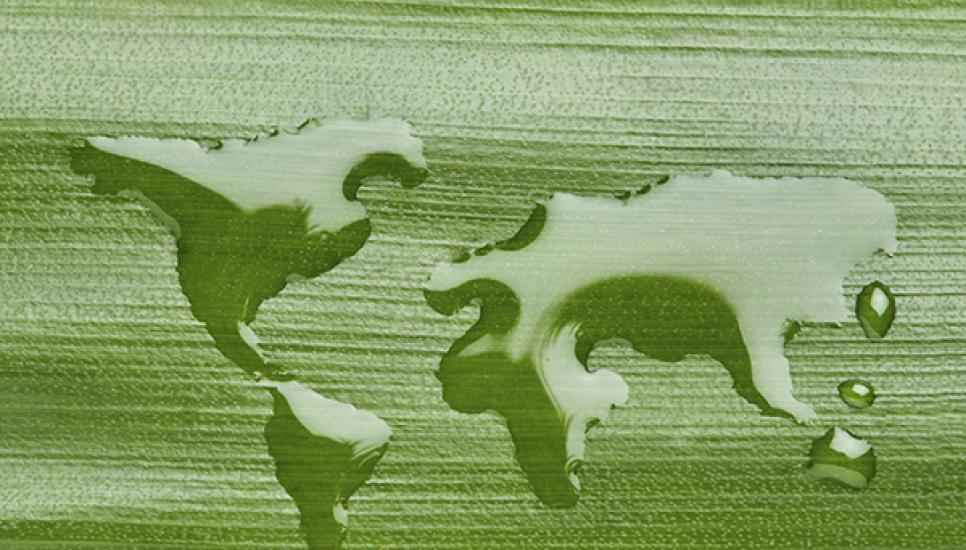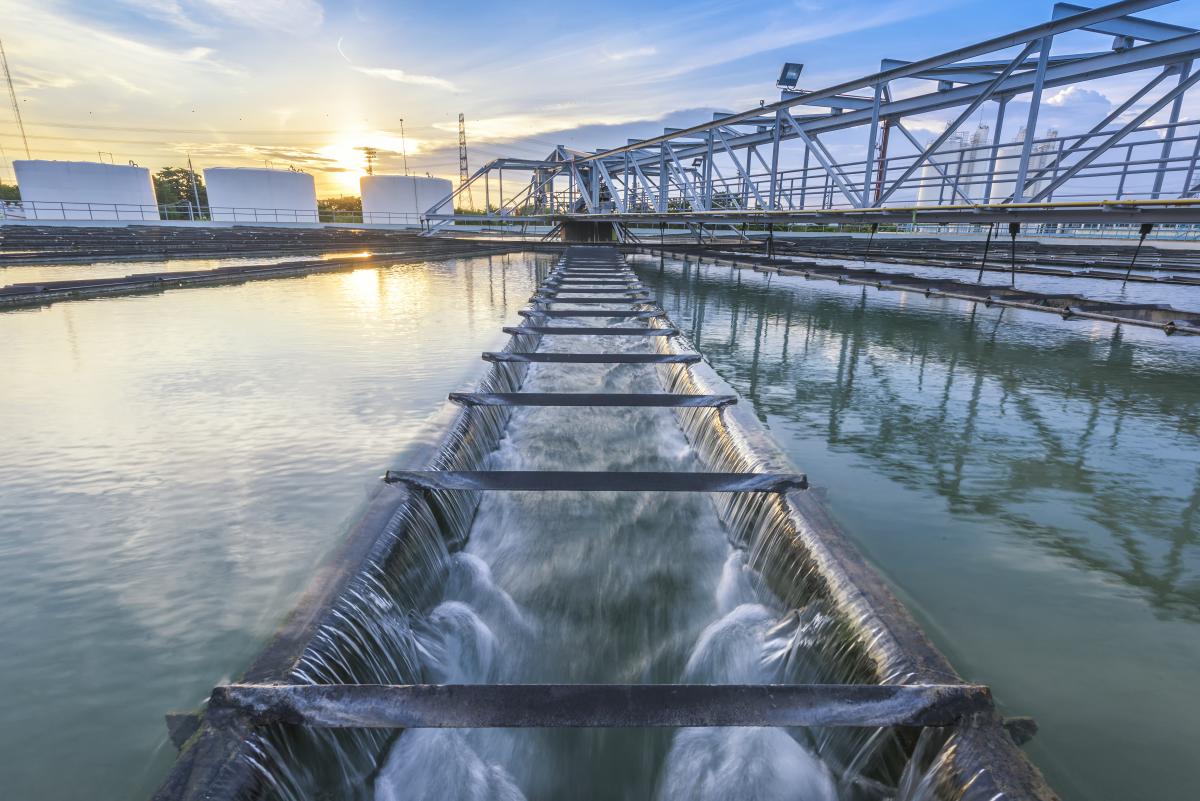Introducing the decentralised waste-to-energy system that produces biogas where it is needed

The European energy crises has been caused by a mix of various factors, including the post-pandemic surge in demand, investors’ reluctance to develop new fossil fuel projects, the embargo on Russia and the Organisation of the Petroleum Exporting Countries’ (OPEC) decision to throttle their petroleum output. In this complex situation, European countries are being forced to develop alternative energy sources.
Natural gas is difficult to replace in many industries. However, one exception is the food and beverage industry, which sits on enormous untapped resources of biogas in their wastewater.
Wastewater is an unused resource, of which 380 billion cubic metres are produced worldwide [1]. It contains valuable nutrients and energy and global production is expected to increase to 24% by 2030 and 51% by 2050. Wastewater treatment consumes about 3-4% of global energy production [2]. Full energy recovery would offset this energy use and make it even profitable in many cases. By one estimate, water treatment emits up to 5% of the man-made carbon dioxide (CO2) [3]. Unfortunately, many companies and municipalities still avoid complex and expensive wastewater treatment technologies – and keep on wasting their assets.
The European Biogas Association estimates that by 2050, 40% of the methane gas demand (in excess of 100 billion cubic metres) could be met by domestic biogas production [4]. At Hexem, we think this could be accomplished much faster using portable technology and a better business model.

Europe is the world's largest cheese producer making more than nine million tons. Nine cubic metres of cheese whey remain per ton of cheese. Despite its high nutritional value, whey is often treated like wastewater for various reasons. The very high organic load of whey makes it difficult to treat it. At the same time, it is a market opportunity for biogas production. In Europe and the US, the market is larger than one billion cubic metres [5]. In contrast, the treatment costs of cheese wastewater including whey would surpass €12 billion if it was treated properly (which is often not the case). For example, a medium-sized cheese factory pays €1.5 million annually for their wastewater. Eliminating these costs while producing biogas would make dairy wastewater a valuable resource.
This situation is similar in many other food and beverage sectors, such as breweries, distilleries, wineries, olive mills, bakeries and so forth. All of these sectors are characterised by high-energy demand for heating. This cannot be easily replaced by renewable electric power.
State-of-the-art wastewater treatment is based on expensive aeration and classic sludge digestion with incineration. These methods consume often more than 70% of a plant’s energy. If energy-rich contaminants, such as the total organic carbon or ammonia were converted into biogas before the process, savings of at least 80% could be realised. It is absurd that this energy is removed from watewater using even more energy.

Nevertheless, a growing number of sewage plants already recovers resources other than water. The oldest recycling products are biogas and fertilisers obtained from sewage sludge. Due to its content of heavy metals, such as copper and mercury, sewage sludge is no longer used as fertiliser.
Biogas, in turn, is particularly popular in Europe because the quantities and prices are high enough to compete with natural gas. Biogas is also a green alternative to natural gas, since no net CO2 is emitted. One disadvantage of classic biogas is its CO2 and sulphide content. Another downside is that biogas production is the terminal treatment step, wasting precious wastewater resources. Finally, the size and complexity of current digesters require a substantial commitment from users when it comes to capital expenditures and operating expenses. Most food producers prefer to focus on making food and not on cleaning their wastewater.
Hexem’s high performance biogas reactors solve these problems through miniaturisation. We accomplished a 20-fold size reduction compared with traditional systems using a technology called microbial electrolysis. The electrolysis of wastewater is catalysed by electroactive microbes on the anode (the positive electrode) [6]. The reaction products are CO2 (from organic matter) and nitrogen gas (N2, from ammonia).
At the same time, hydrogen gas (H2) is formed on the cathode (the negative electrode). This hydrogen reacts with CO2 to methane. This last methanisation step completes the biocatalytic treatment of the wastewater. The collected biogas can either be injected into the natural gas grid or used on site to generate electricity and heat.
Principle of a microbial electrolysis reactor. On the left side, the organic material is oxidised to CO2 on the anode. The free electrons are absorbed by the anode. These electrons are then transported using a DC power source and passed on to the cathode. Hydrogen gas (H2) is released. CO2 and hydrogen form methane, the terminal reaction product.
The reaction is accelerated using an applied voltage and based on the laws of thermodynamics. In consequence, the reactor volume can be reduced. The size reduction has several advantages. First, it makes biogas accessible in markets in which it was not possible due to the high investment costs. Second, reducing size enables higher throughput at lower costs. Smaller units are mobile and can be shared, moved or rented out. After all, our clients want to make food. Their waste and their energy bills are Hexem’s problem.

Hexem will be presenting at the ClimateTech Investing Forum 2022 in Lausanne, Switzerland, on December 6 and 7.
For more information and to book a place, visit www.climatetechinvesting.com.
To participate, email Anton Paul via antonpaul@campdenwealth.com.
Campden Wealth is not an investment advisory service and is not a registered investment adviser or broker/dealer and has performed no due diligence and does not endorse any investment services, strategies or managers listed in Managerlink or at any other Campden Wealth event. You should perform your own extensive due diligence.
[1] Qadir, et al. (2020) Global and regional potential of wastewater as a water, nutrient and energy source. Natural Resources Forum doi:10.1111/1477-8947.12187.
[2] McCarty, et al. (2011) Domestic wastewater treatment as a net energy producer – Can this be achieved?Environmental Science and Technology 45, 7100–7106. doi:10.1021/es2014264.
[3] Rothausen & Conway (2011) Greenhouse-gas emissions from energy use in the water sector. Nature Climate Change doi:10.1038/nclimate1147
[4] The European Biogas Association https://www.europeanbiogas.eu/benefits/#growth-potential
[5] Based on data of the European Dairy Association. Economic Report 2020; Brussels, 2020.
[6] Siegert, et al. (2015) The Presence of Hydrogenotrophic Methanogens in the Inoculum Improves Methane Gas Production in Microbial Electrolysis Cells. Frontiers in Microbiology, 5, 778. doi:10.3389/fmicb.2014.00778






